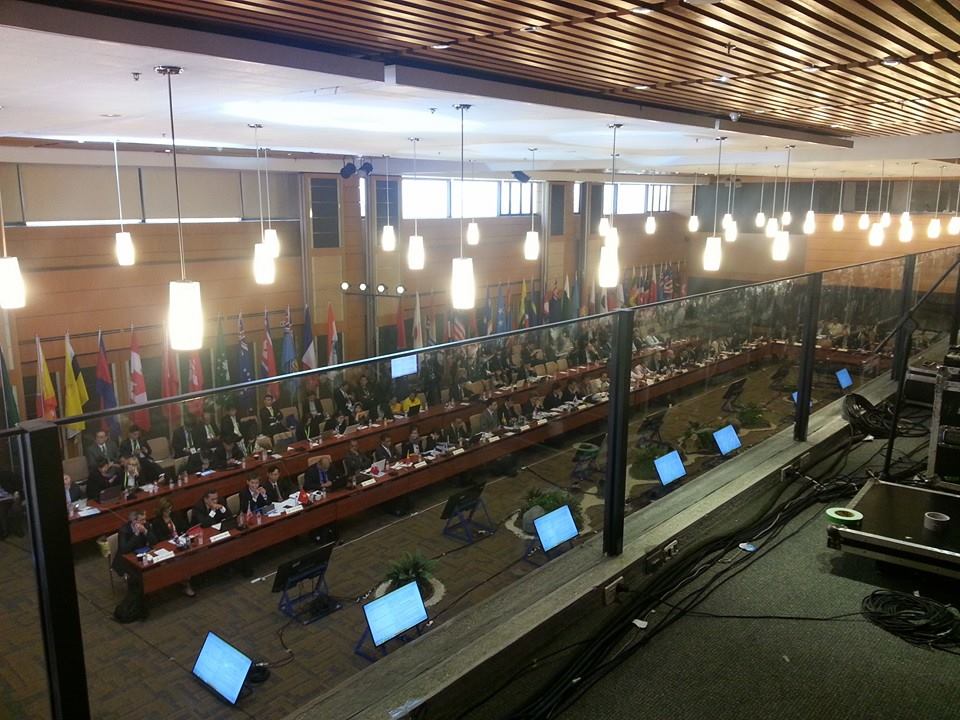Simultaneous interpretation, also known as real-time translation, plays a vital role in global communication. In a world where cross-cultural interactions are frequent, this technique bridges language gaps and fosters understanding. Let’s explore why simultaneous interpretation matters and its benefits.
Understanding Simultaneous Interpretation
Simultaneous interpretation involves translating spoken language from one language to another while the speaker is still talking. Unlike consecutive interpretation (where the interpreter waits for the speaker to finish), simultaneous interpreters work in real time. They listen to the source language, process it, and convey it orally to the audience almost simultaneously with the speaker.
How It Works
Imagine an international conference. Diplomats, business leaders, and academics from different countries gather to discuss critical issues. Simultaneous interpreters sit in soundproof booths, wearing headsets and equipped with microphones. As the speaker talks, interpreters listen, interpret, and relay the message to the audience in their native language—all without missing a beat.
Why Simultaneous Interpretation Matters
Facilitating Communication:
Simultaneous interpretation ensures seamless communication during conferences and meetings.
It promotes collaboration between people of different cultures.
Equal Access to Information:
By providing real-time translations, it ensures that all participants receive accurate information simultaneously.
Non-native speakers can actively participate and contribute.
Conflict Resolution and Diplomacy:
Simultaneous interpreters bridge gaps between nations, facilitating dialogue and preventing misunderstandings.
Accurate communication reduces the risk of misinterpretation.
Business and Trade:
In the global marketplace, businesses negotiate deals and collaborate across borders.
Simultaneous interpretation enables effective communication during crucial interactions.
Education:
International students benefit from real-time translations during lectures and seminars.
It enhances learning experiences by allowing students to grasp complex concepts in their preferred language.
Challenges and Skills
Simultaneous interpreters possess unique skills:
Linguistic Mastery: Fluent in both source and target languages.
Subject Matter Expertise: Understand specialized topics.
Quick Thinking: Process information rapidly.
Focus and Concentration: Maintain concentration during long sessions.
Conclusion
Simultaneous interpretation connects cultures, ideas, and progress. Skilled interpreters enable meaningful conversations and contribute to a harmonious global community. Next time you attend an international event, appreciate the silent heroes—the simultaneous interpreters—who ensure communication transcends language boundaries.
For Professional Simultaneous Interpretation Systems And Equipment For RENT/SERVICES in the Philippines and other countries in Asia, - CONTACT US.
Understanding Simultaneous Interpretation
Simultaneous interpretation involves translating spoken language from one language to another while the speaker is still talking. Unlike consecutive interpretation (where the interpreter waits for the speaker to finish), simultaneous interpreters work in real time. They listen to the source language, process it, and convey it orally to the audience almost simultaneously with the speaker.
How It Works
Imagine an international conference. Diplomats, business leaders, and academics from different countries gather to discuss critical issues. Simultaneous interpreters sit in soundproof booths, wearing headsets and equipped with microphones. As the speaker talks, interpreters listen, interpret, and relay the message to the audience in their native language—all without missing a beat.
Why Simultaneous Interpretation Matters
Facilitating Communication:
Simultaneous interpretation ensures seamless communication during conferences and meetings.
It promotes collaboration between people of different cultures.
Equal Access to Information:
By providing real-time translations, it ensures that all participants receive accurate information simultaneously.
Non-native speakers can actively participate and contribute.
Conflict Resolution and Diplomacy:
Simultaneous interpreters bridge gaps between nations, facilitating dialogue and preventing misunderstandings.
Accurate communication reduces the risk of misinterpretation.
Business and Trade:
In the global marketplace, businesses negotiate deals and collaborate across borders.
Simultaneous interpretation enables effective communication during crucial interactions.
Education:
International students benefit from real-time translations during lectures and seminars.
It enhances learning experiences by allowing students to grasp complex concepts in their preferred language.
Challenges and Skills
Simultaneous interpreters possess unique skills:
Linguistic Mastery: Fluent in both source and target languages.
Subject Matter Expertise: Understand specialized topics.
Quick Thinking: Process information rapidly.
Focus and Concentration: Maintain concentration during long sessions.
Conclusion
Simultaneous interpretation connects cultures, ideas, and progress. Skilled interpreters enable meaningful conversations and contribute to a harmonious global community. Next time you attend an international event, appreciate the silent heroes—the simultaneous interpreters—who ensure communication transcends language boundaries.
For Professional Simultaneous Interpretation Systems And Equipment For RENT/SERVICES in the Philippines and other countries in Asia, - CONTACT US.




 RSS Feed
RSS Feed
